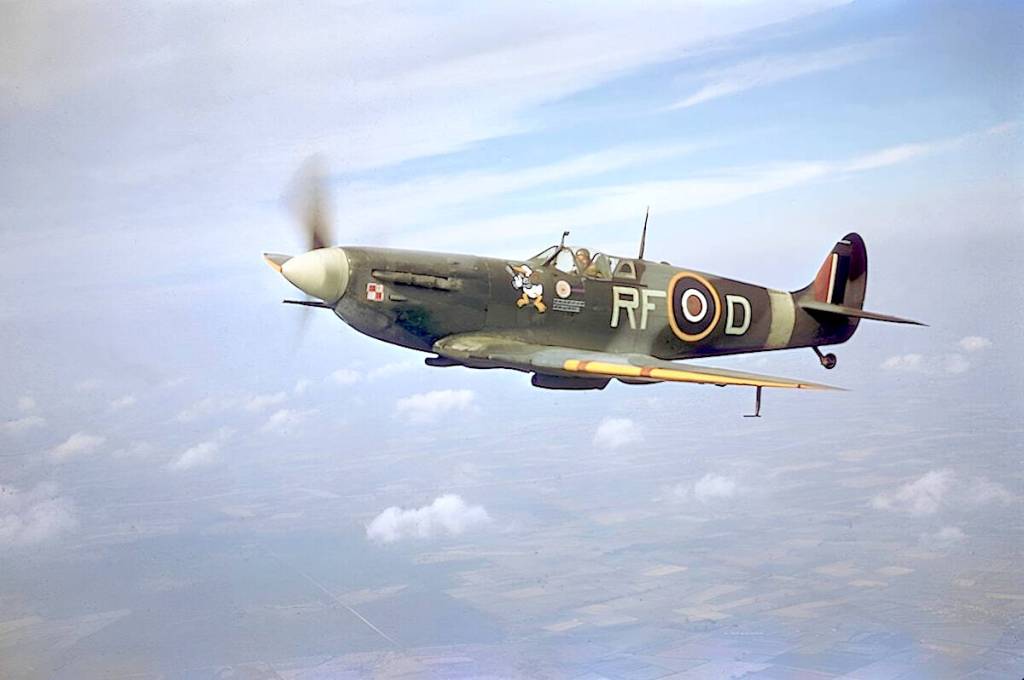Top Stories
Legacy of WWII Warplanes: From Racing Designs to Fighter Jets

The evolution of military aircraft during World War II reflects a complex blend of innovation born from both pride and tragedy. As the threat of fascism escalated in the late 1930s, racing plane designs transformed into formidable fighter aircraft, crucial for the defense of Allied nations. This shift not only marked a pivotal moment in aviation history but also shaped the future of military aviation.
The iconic P-51 Mustang, developed by North American Aviation, serves as a prime example of this transformation. Initially, the Mustang began as a racing aircraft in the early 1940s, designed with speed and agility in mind. However, as fascist regimes in Germany and Italy expanded their reach, the need for advanced fighter planes became increasingly urgent.
The P-51 Mustang entered service in 1942 and quickly gained a reputation as one of the most effective fighter aircraft of the war. It featured a powerful engine, exceptional range, and advanced aerodynamics, allowing it to escort bombers deep into enemy territory. This capability significantly contributed to the success of the Allied Forces in various campaigns across Europe.
From Racing to Warfare
The design philosophy behind the Mustang was heavily influenced by the racing planes of its time. Inspired by the speed and performance of civilian aircraft, engineers integrated these elements into military designs. The Mustang’s sleek lines and powerful performance can be traced back to the competitive racing scene that prioritized speed and agility.
As the realities of war set in, the Mustang’s design evolved to meet the demands of the battlefield. It had a top speed of approximately 703 km/h, a significant advantage over many of its contemporaries. Pilots praised its handling and responsiveness, making it a favorite among airmen.
Moreover, the Mustang was not only a symbol of technological advancement but also a testament to the resilience of those who designed and built it. The aircraft became a source of national pride for the United States, embodying the spirit of innovation during a time of global conflict.
Impact on Aviation and Beyond
The legacy of the P-51 Mustang extends beyond its immediate impact in World War II. The aircraft laid the groundwork for future designs and advancements in military aviation. Its success influenced post-war developments, including the transition to jet-powered aircraft, which would dominate the skies in the following decades.
In addition to its technical achievements, the Mustang also represented a shift in public perception regarding military aviation. The aircraft’s success in combat helped to galvanize support for the war effort, showcasing the importance of air power in modern warfare. The narrative surrounding the Mustang, as a symbol of American ingenuity, played a vital role in shaping national identity during and after the conflict.
In conclusion, the story of World War II warplanes like the P-51 Mustang is one of transformation and resilience. From their origins in racing designs to their pivotal roles in combat, these aircraft reflect the intricate interplay between technological advancement and the harsh realities of war. The legacy of these planes continues to be celebrated, reminding us of the innovation and bravery that defined an era.
-

 Education3 months ago
Education3 months agoBrandon University’s Failed $5 Million Project Sparks Oversight Review
-

 Science4 months ago
Science4 months agoMicrosoft Confirms U.S. Law Overrules Canadian Data Sovereignty
-

 Lifestyle3 months ago
Lifestyle3 months agoWinnipeg Celebrates Culinary Creativity During Le Burger Week 2025
-

 Health4 months ago
Health4 months agoMontreal’s Groupe Marcelle Leads Canadian Cosmetic Industry Growth
-

 Technology3 months ago
Technology3 months agoDragon Ball: Sparking! Zero Launching on Switch and Switch 2 This November
-

 Science4 months ago
Science4 months agoTech Innovator Amandipp Singh Transforms Hiring for Disabled
-

 Education3 months ago
Education3 months agoRed River College Launches New Programs to Address Industry Needs
-

 Technology4 months ago
Technology4 months agoGoogle Pixel 10 Pro Fold Specs Unveiled Ahead of Launch
-

 Business3 months ago
Business3 months agoRocket Lab Reports Strong Q2 2025 Revenue Growth and Future Plans
-

 Technology2 months ago
Technology2 months agoDiscord Faces Serious Security Breach Affecting Millions
-

 Education3 months ago
Education3 months agoAlberta Teachers’ Strike: Potential Impacts on Students and Families
-

 Science3 months ago
Science3 months agoChina’s Wukong Spacesuit Sets New Standard for AI in Space
-

 Education3 months ago
Education3 months agoNew SĆIȺNEW̱ SṮEȽIṮḴEȽ Elementary Opens in Langford for 2025/2026 Year
-

 Technology4 months ago
Technology4 months agoWorld of Warcraft Players Buzz Over 19-Quest Bee Challenge
-

 Business4 months ago
Business4 months agoNew Estimates Reveal ChatGPT-5 Energy Use Could Soar
-

 Business3 months ago
Business3 months agoDawson City Residents Rally Around Buy Canadian Movement
-

 Technology2 months ago
Technology2 months agoHuawei MatePad 12X Redefines Tablet Experience for Professionals
-

 Business3 months ago
Business3 months agoBNA Brewing to Open New Bowling Alley in Downtown Penticton
-

 Technology4 months ago
Technology4 months agoFuture Entertainment Launches DDoD with Gameplay Trailer Showcase
-

 Technology4 months ago
Technology4 months agoGlobal Launch of Ragnarok M: Classic Set for September 3, 2025
-

 Technology4 months ago
Technology4 months agoInnovative 140W GaN Travel Adapter Combines Power and Convenience
-

 Science4 months ago
Science4 months agoXi Labs Innovates with New AI Operating System Set for 2025 Launch
-

 Top Stories2 months ago
Top Stories2 months agoBlue Jays Shift José Berríos to Bullpen Ahead of Playoffs
-

 Technology4 months ago
Technology4 months agoNew IDR01 Smart Ring Offers Advanced Sports Tracking for $169










